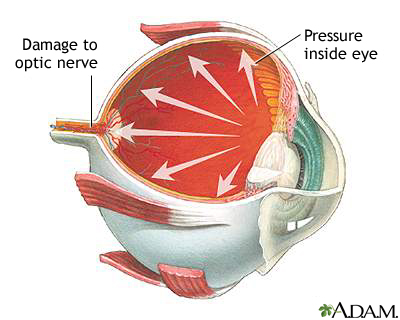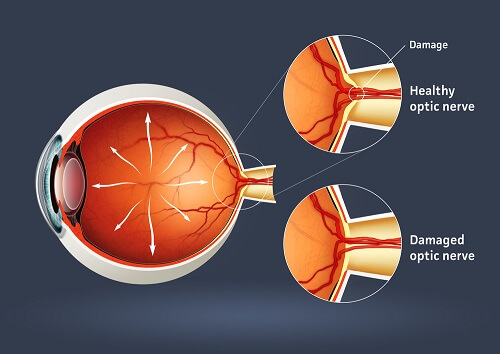Reliable Glaucoma Service Near Me: Shield Your Vision with Specialists
Reliable Glaucoma Service Near Me: Shield Your Vision with Specialists
Blog Article
Recognizing the Different Vision Modification Procedures Available for Clearer View
In the world of vision improvement treatments, a wide range of options exist to attend to refractive errors and offer individuals with clearer sight. From the extensively identified LASIK surgical procedure to much less intrusive treatments like PRK and implantable lenses, the area of ophthalmology uses a variety of methods tailored to suit various requirements and choices. Each procedure comes with its own set of considerations, benefits, and prospective risks. Understanding the nuances of these vision correction approaches is critical for making informed choices concerning one's visual wellness. Allow's check out the intricacies of these procedures and lost light on the path to attaining improved vision clarity.
LASIK Surgery
LASIK surgical procedure is an usual refractive procedure utilized to deal with vision issues such as farsightedness, astigmatism, and nearsightedness. This medical strategy, which stands for Laser-Assisted in Situ Keratomileusis, aims to improve the cornea to enhance how light is focused on the retina, eventually enhancing vision clearness.
One of the key advantages of LASIK surgical procedure is the quick improvement in vision experienced by patients. Numerous people notice a considerable improvement in their eyesight promptly after the treatment. In addition, most people report very little pain and pain throughout the surgical procedure and healing duration. The healing time for LASIK is relatively quick, with many individuals going back to their daily tasks within a day or more post-operation. Overall, LASIK surgical treatment is a popular option for people looking for a lasting option for their vision issues.
PRK Treatment
While also an usual refractive treatment, the PRK (Photorefractive Keratectomy) strategy varies from LASIK surgical treatment in its approach to correcting vision issues. In PRK, instead of creating a flap on the cornea, the external layer of the cornea, called the epithelium, is entirely eliminated. This permits the laser to reshape the cornea to correct refractive mistakes such as nearsightedness, astigmatism, and farsightedness directly externally.

In spite of the longer recovery time, PRK can produce excellent outcomes in vision improvement, making it a valuable option for those who might not appropriate candidates for LASIK surgery.
Implantable Lenses
As opposed to PRK where the cornea is improved straight, implantable lenses use another technique for correcting vision by inserting man-made lenses inside the eye. This procedure is especially useful for people with high levels of nearsightedness, astigmatism, or farsightedness that might not appropriate prospects for laser surgeries like LASIK or PRK.
Implantable lenses, also called phakic intraocular lenses, job by supplementing the eye's all-natural lens with a man-made one. eyecare near me. These lenses can be positioned in front of the all-natural lens (former chamber) or behind the iris and before the all-natural lens (posterior chamber) By changing the power and positioning of these lenses, ophthalmologists can successfully correct refractive mistakes and boost visual acuity
One benefit of implantable lenses is that they are removable and exchangeable, offering flexibility for future modifications. Nevertheless, just like any type of procedure, there are threats entailed, such as infection or cataract formation. Clients taking into consideration implantable lenses need to seek advice from with an eye treatment professional to identify one of the most ideal choice based on their individual demands and eye wellness.
Corneal Rings
Corneal rings, additionally known as intracorneal ring sectors, are small, transparent tools inserted into the cornea to correct vision distortions such as keratoconus. Keratoconus is a condition where the cornea thins and protrudes exterior, causing vision to become distorted. The insertion of corneal rings helps to flatten the cornea, enhancing visual acuity and reducing the irregular astigmatism triggered by keratoconus.
The procedure for inserting corneal rings is reasonably fast and minimally intrusive, commonly carried out as an outpatient procedure. Throughout the surgical procedure, the eye doctor makes a small incision in the cornea and inserts the rings at a particular deepness. As soon as in position, the rings aid to reshape the cornea, giving a smoother surface for light to enter the eye, which can cause clearer vision.
Corneal rings are thought about a relatively easy to fix procedure, as they can be removed or changed if needed. retina service site here near me. While they may not completely eliminate the demand for glasses or get in touch with lenses, corneal rings can considerably enhance vision top quality and general visual comfort for individuals with keratoconus or various other corneal irregularities
Refractive Lens Exchange
Adhering to the correction of corneal irregularities with procedures like corneal rings, another vision correction method that can attend to refractive errors is Refractive Lens Exchange (RLE) RLE is a medical treatment that involves replacing the eye's natural lens with a fabricated intraocular lens (IOL) to remedy refractive mistakes such as presbyopia, nearsightedness, and farsightedness. This treatment is especially helpful for individuals who might not be suitable prospects for procedures like LASIK or PRK due to aspects such as slim corneas or high refractive mistakes.

Conclusion
To conclude, there are numerous vision improvement procedures offered to assist individuals achieve more clear view. LASIK surgical procedure, PRK procedure, implantable lenses, corneal rings, and refractive lens exchange are all choices that can address various vision problems. It is essential for individuals to seek advice from their eye care provider to establish one of the most suitable YOURURL.com procedure based upon their specific needs and preferences. With advancements in modern technology, attaining enhanced vision is now more available than ever.
In the world of vision adjustment procedures, a plethora of alternatives exist to attend to refractive mistakes and supply people with more clear sight.LASIK surgical procedure is a typical refractive procedure utilized to correct vision troubles such as astigmatism, farsightedness, and nearsightedness.While also a common refractive procedure, the PRK (Photorefractive Keratectomy) strategy differs from LASIK surgical treatment in its approach to remedying vision issues.Adhering to the improvement of corneal irregularities with procedures like corneal rings, one more vision modification method that can attend to refractive errors is Refractive Lens Exchange (RLE) LASIK surgical procedure, PRK treatment, implantable lenses, corneal rings, and about his refractive lens exchange are all options that can address different vision issues.
Report this page